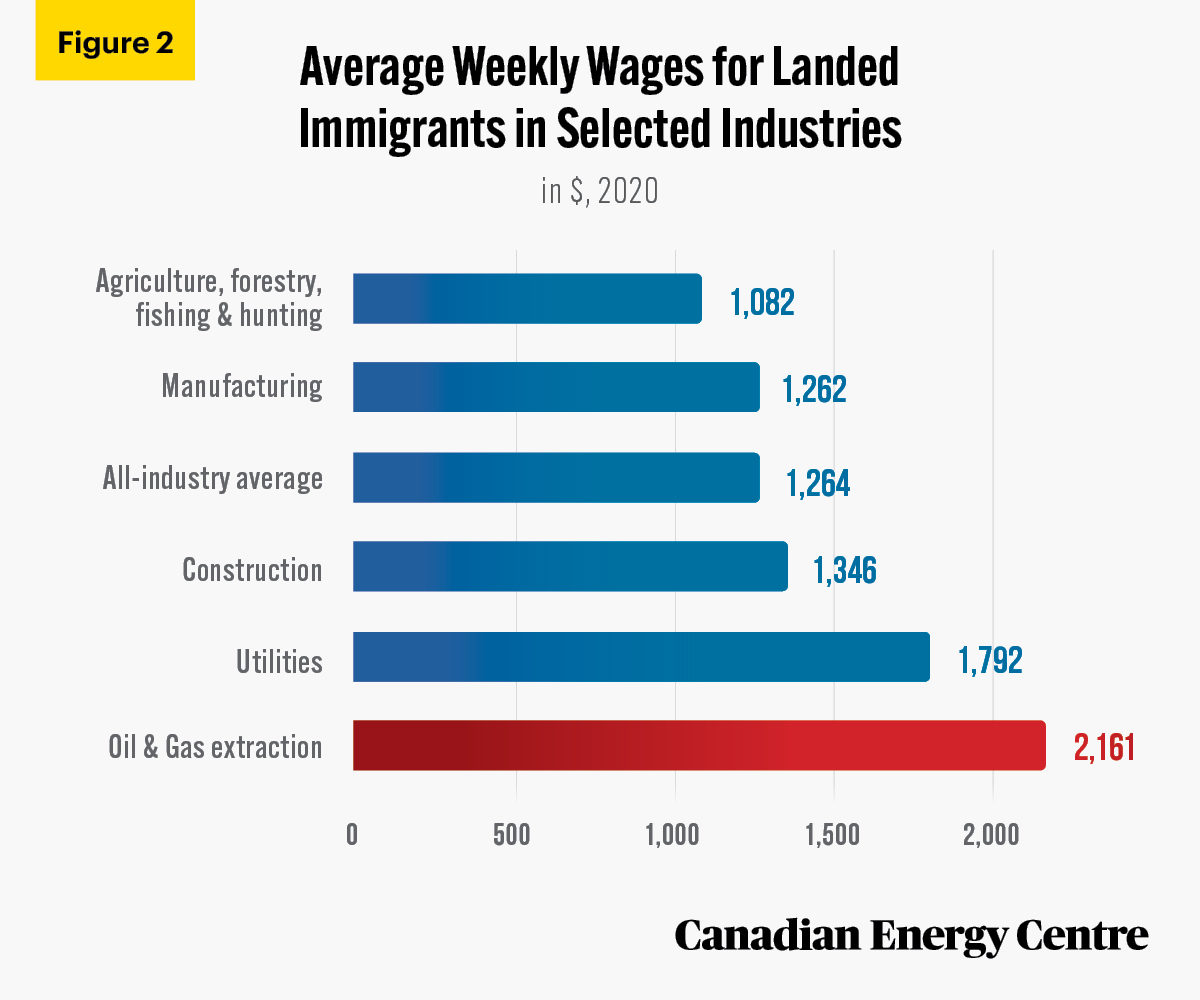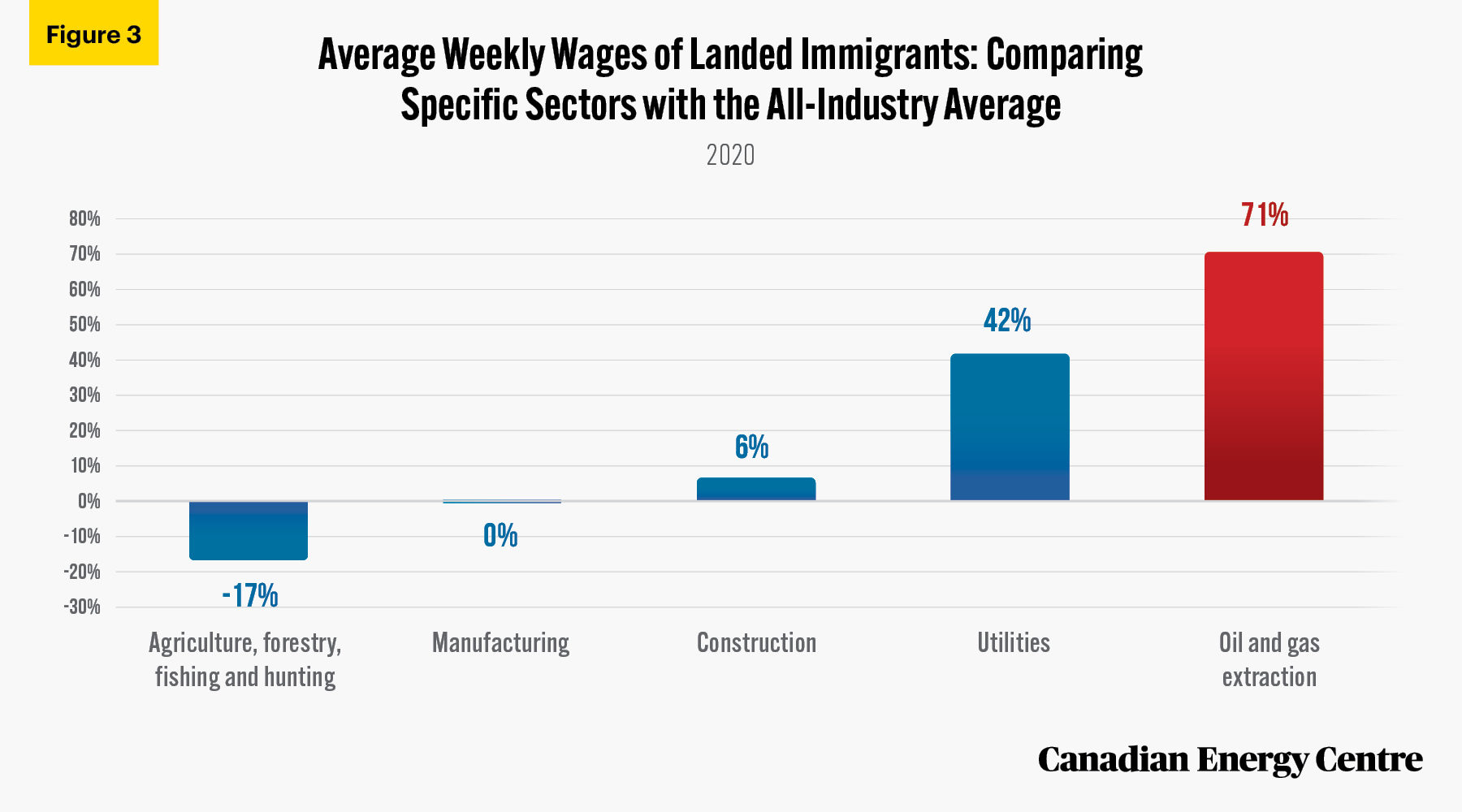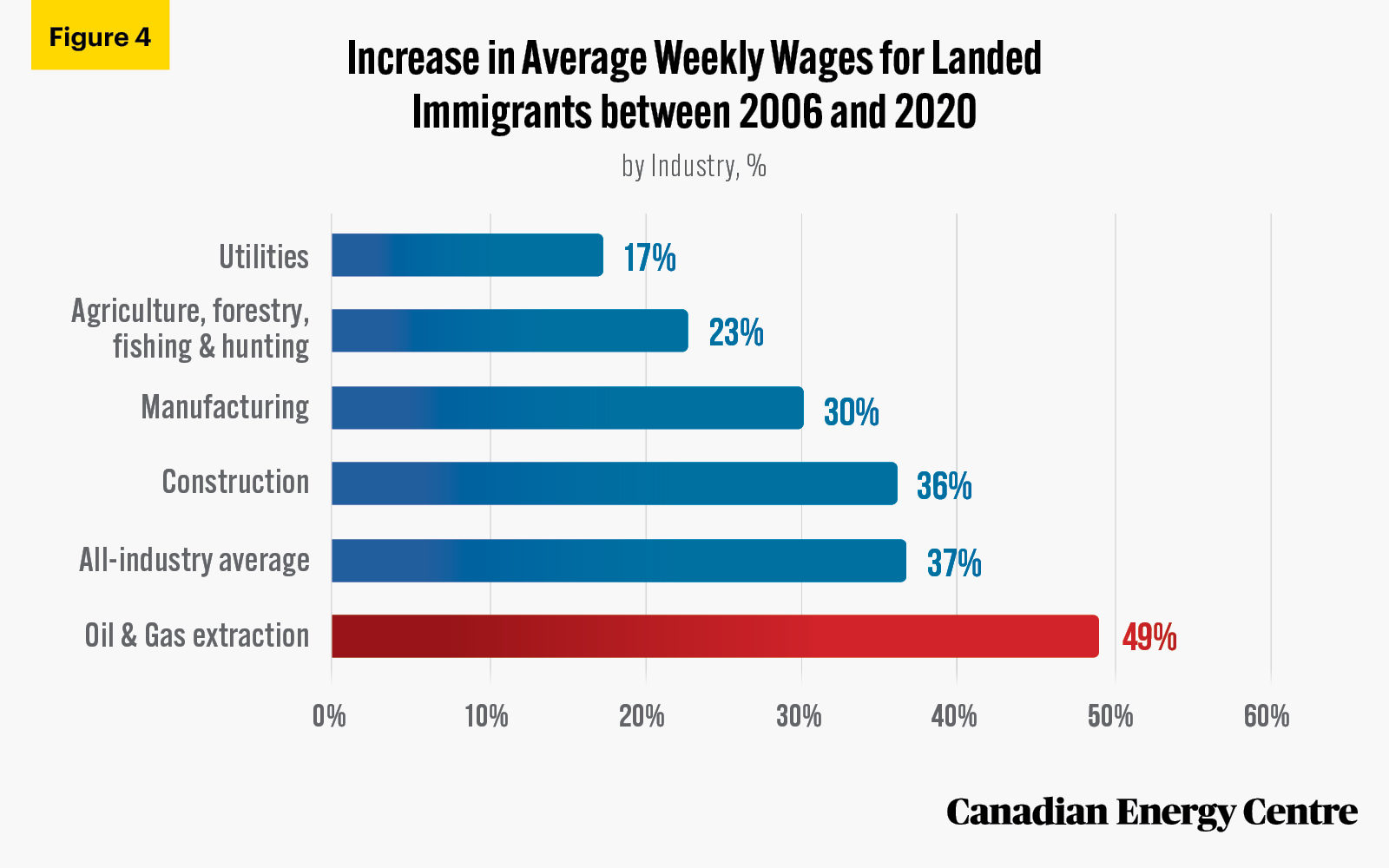To sign up to receive the latest Canadian Energy Centre research to your inbox email: research@canadianenergycentre.ca
Download the PDF here
Download the charts here
Immigrants and employment in the oil and gas sector
In this Fact Sheet, we examine landed immigrant employment trends and incomes in the Canadian oil and gas extraction sector between 2006, the earliest year available for comparable data, and 2020.
In summary:
- The number of landed immigrants employed in the oil and gas sector increased from 8,800 in 2006 to 15,600 in 2020.¹
- Immigrants to Canada employed in the oil and gas sector earned
º 21 per cent more than those in utilities;
º 61 per cent more than those in construction;
º 71 per cent more than those in manufacturing;
º and nearly twice as much as landed immigrants employed in agriculture.
- Also, increases in immigrant wages between 2006 and 2020 were higher in the oil and gas sector than in other major industries.
Figure 1: Immigrant employment and income trends in the resource sector between 2006 and 2020
The data show that the participation of landed immigrants in Canada‘s oil and gas extraction sector has generally increased since 2006. In 2020, 15,600 landed immigrants were employed in the Canadian oil and natural gas extraction sector. Between 2019 and 2020, there was an increase of 2,400 landed immigrants employed in the sector. By 2020, 77 per cent more landed immigrants worked in the oil and gas sector than the 8,800 immigrants employed in the sector in 2006.
1. For the purposes of tracking economic progress, Statistics Canada defines a landed immigrant as someone to whom the immigration authorities have granted the right to live in Canada permanently. Canadian citizens by birth and non-permanent residents (people from another country who live in Canada and have a work or study permit or are claiming refugee status and family members living here with them) are not landed immigrants

Source: Derived from Statistics Canada, Labour Force Survey, custom tabulation.
Figure 2: Average weekly wages for landed immigrants by industry
Landed immigrants employed in the oil and gas extraction sector are paid more than those working in other goods-producing industries and more than the average for all industries for landed immigrants. In 2020, the average weekly wage ranged from $1,082 for landed immigrants employed in agriculture, forestry, fishing, and hunting to $2,161 in the oil and gas extraction sector. By comparison, the all-industry average weekly wage for landed immigrants was $1,264.

Derived from Statistics Canada, Labour Force Survey, custom tabulation.
Figure 3: Immigrant wages in the broad oil and gas extraction sector are 71% higher than the all-industry average
Expressed as percentages, in 2020, the average weekly wage for landed immigrants in the oil and gas sector was higher than for those in selected other sectors and the all-industry average. Immigrants in agriculture, forestry, fishing, and hunting earned 17 per cent less than the all-industry average; those in manufacturing earned virtually the same as that average; those in construction earned 6 per cent more; and immigrants in working in the utilities sector earned 42 per cent more. Meanwhile, those working in oil and gas earned 71 per cent more than the all-industry average.

Derived from Statistics Canada, Labour Force Survey, custom tabulation.
Figures 4 and 5: Highest wage increases for landed immigrants came in the oil and gas sector
Between 2006 and 2020, average weekly wages for landed immigrants employed in the oil and gas extraction sector grew from $1,450 to $2,161, an increase of nearly 49 per cent or $711 more. This compares with a range of 17 per cent higher for those in the utilities sector and 36 per cent more for those in construction. The all-industry average growth was 37 per cent between 2006 and 2020, or in dollar terms, an increase of $340.

Derived from Statistics Canada, Labour Force Survey, custom tabulation.

Derived from Statistics Canada, Labour Force Survey, custom tabulation.
Key finding: Oil and gas sector provides resources and opportunities for landed immigrants
Statistics Canada Labour Force Survey data show that landed immigrants in Canada benefit from their participation in the oil and gas extraction sector. The number of landed immigrants employed in the sector has generally grown over the past 15 years. Average weekly earnings for landed immigrants working in the sector are higher than for other goods-producing industries and the average of all other sectors.
Notes
This CEC Fact Sheet was compiled by Ven Venkatachalam and Mark Milke at the Canadian Energy Centre (www.canadianenergycentre.ca). All percentages in this report are calculated from the original data, which can run to multiple decimal points. They are not calculated using the rounded figures that may appear in charts and in the text, which are more reader friendly. Thus, calculations made from the rounded figures (and not the more precise source data) will differ from the more statistically precise percentages we arrive at using source data. The authors and the Canadian Energy Centre would like to thank and acknowledge the assistance of two anonymous reviewers in reviewing the data and research for the initial edition of this Fact Sheet. Image credits: James Armbruster and Rose Butler.
Source
Statistics Canada (2021). Statistics Canada, Custom tabulation, Labour Force Survey, 0421_11 Table 1.
Creative Commons Copyright
Research and data from the Canadian Energy Centre (CEC) is available for public usage under creative commons copyright terms with attribution to the CEC. Attribution and specific restrictions on usage including non-commercial use only and no changes to material should follow guidelines enunciated by Creative Commons here: Attribution-NonCommercial-NoDerivs CC BY-NC-ND.
